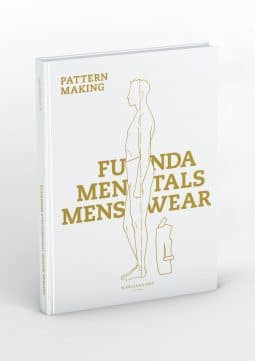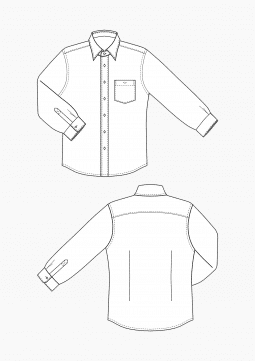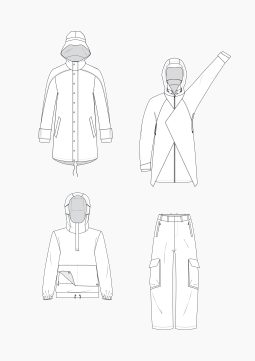How to tie a Tie
Deutsch

In a tie knot, the wide end of the tie is looped around the narrow end, creating a loop. The narrow end can then be pulled back and forth through this knot and the tie is thus made adjustable in width.
The most important tie knots:
- Simple knot / Four in hand
- Simple Windsor knot
- Double Windor knot
- Double knot / Victoria knot / Prince Albert knot
- Pratt Knots / Shelby Knots
- Oriental knot / Persian knot
With the perfect tie knot, care should be taken that the wide end covers the narrow end of the tie and that the belt buckle is touched by the tie end or even slightly protrudes.
Tying a tie requires a little tact. In this article you will find simple instructions on how to tie a tie correctly. We show different methods to fold a suitable handkerchief. You will find many more interesting facts about ties as well as instructions for how to make a pattern for a tie in our article Sewing a Tie.
Inhalt:
- Instruction – The simple Windsor knot
- Instruction – The double Windsor knot
- Instruction: Triangular folding
- Instruction: American folding
- Instruction: Three-Corner-Up fold
- Instruction: Pocket handkerchief in bulk fold
Instruction – The simple Windsor knot
The simple Windsor knot (also called half Windsor) is the classic among the tie knots and one of the most common knots in the world. The single Windsor knot is slightly smaller and more discreet than its big brother, the double Windsor knot.







- Instructions for the construction of patterns of tie and bow tie, rider’s plastron and cummerbund can be found in our free download.
Instruction – The double Windsor knot
The double Windsor knot (also called large Windsor knot) is named after Duke of Windsor. He made this double knot popular for the tie. This type of tie is particularly suitable for shirts with widely spaced collar corners, such as the Kent collar or the shark collar. The knot is about a quarter larger than the simple Windor knot and therefore not suitable for ties with thick fabric or lining. The knot forms a wide triangular shape.









Instruction: Triangular folding
The triangular fold is somewhat more elegant than the very simple American fold. So the handkerchief goes well with classic, dark suits.




Instruction: American folding
The American folding (also called rectangular folding) is probably the most classic and easiest way to fold the handkerchief. The rectangularly folded handkerchief goes particularly well with a pinstripe suit. For this you choose a plain silk handkerchief.




Instruction: Three-Corner-Up fold
Three-Corner-Up folding (also called Crown folding) is the most festive way to fold the cloth. The handkerchief is draped here to the crown and sits firmly in the breast pocket, without slipping. The pocket handkerchief in crown fold is worn with the festive evening attire. Strong colours give the handkerchief something floral and spread good mood and loosen the strict folding a little.





Instruction: Pocket handkerchief in bulk fold
The easiest folding is at the same time the heaviest folding technique and requires a little skill. It is particularly suitable for scarves made of fine silk and conjures up a casual elegance.









Nice to meet you!
I had a good look at your blog. I also have a blog. Korea’s Blog!
I will visit again next time! I will come again~! Thank you~!